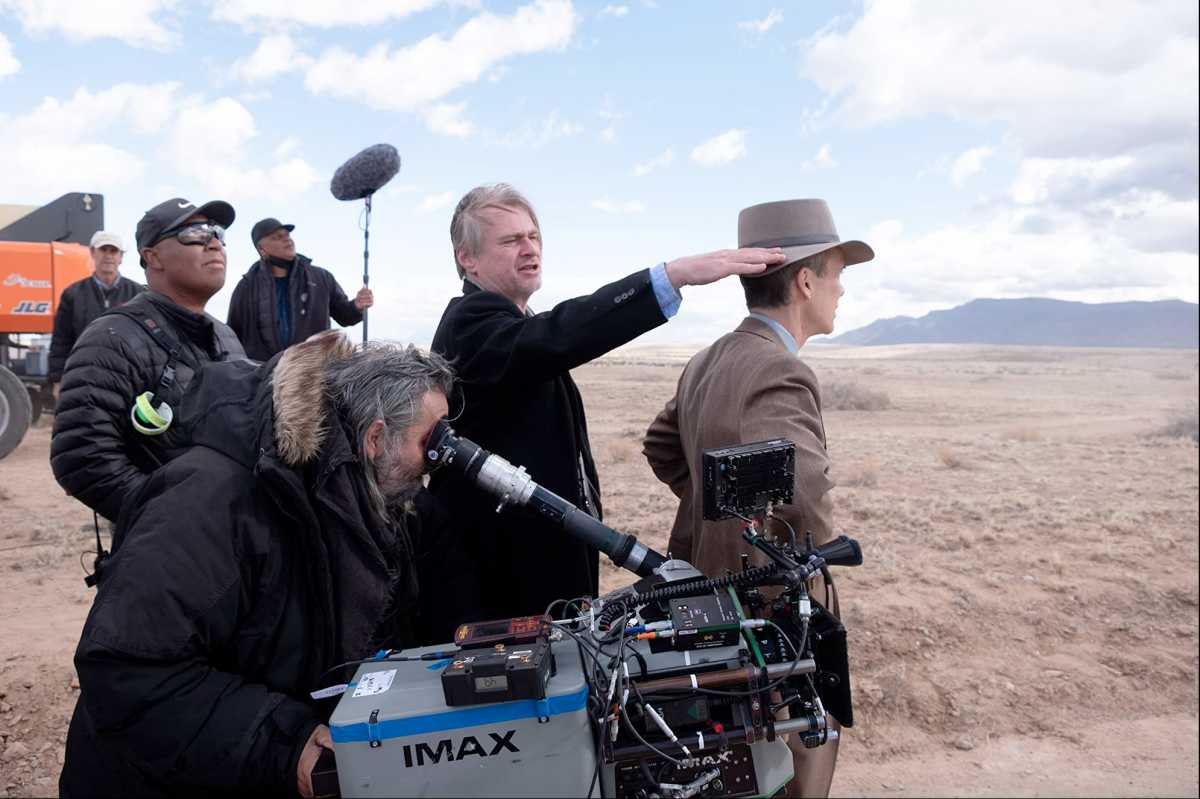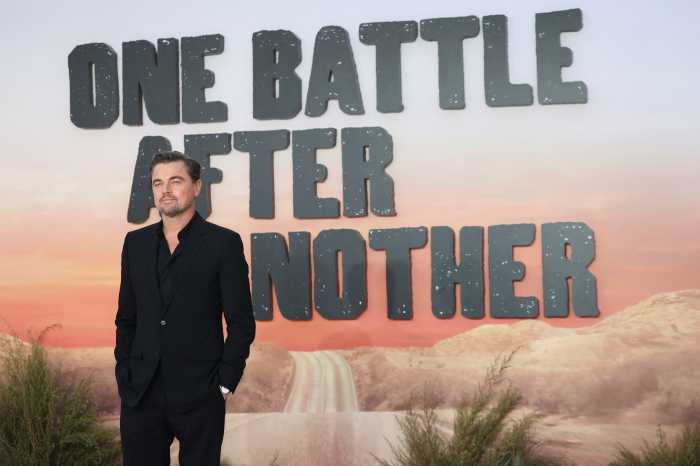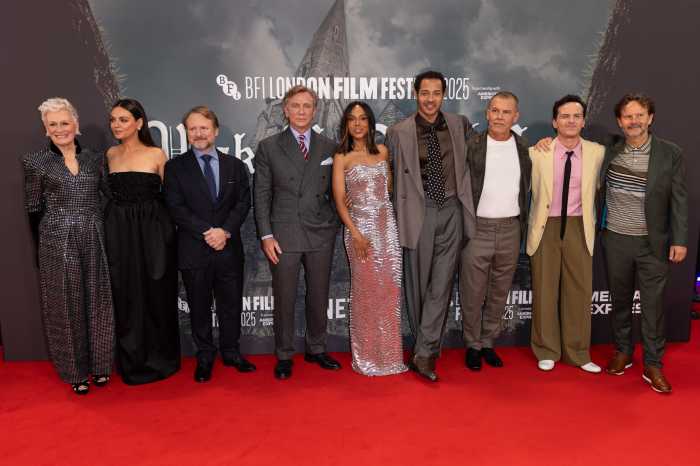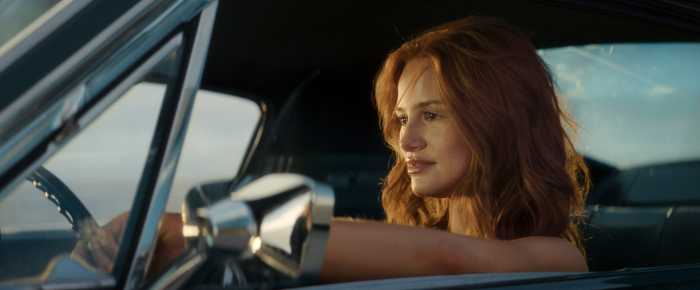By María Estévez, MWN
‘Oppenheimer‘ is an epic thriller about the fast-paced paradox of the enigmatic man who must risk destroying the world to save it. It is Julius Robert Oppenheimer, an American theoretical physicist considered “the father of the atomic bomb” due to his outstanding participation in the Manhattan Project that succeeded in developing the first nuclear weapons in history during World War II.
“Oppenheimer is a fascinating character. The film portrays the tragedy of a genius tormented by his creation,” explains Nolan.
Without following a linear narrative, as in the rest of his titles, the British director admits that he remains faithful to his style.
“It’s a story with which I wanted to take risks without giving answers because it offers a moral dilemma that seems to be very topical. The best minds in the country were in a desperate race against the Nazis to harness the power of the atom in World War II. Imagine those same minds realizing the possibility that they could set the whole world on fire. I wanted to be there and see what it would be like to live through that experience.”
Written and directed by Nolan, the film is based on the Pulitzer Prize-winning book ‘American Prometheus: The Triumph and Tragedy of J. Robert Oppenheimer’ by Kai Bird and the late Martin J. Sherwin. The scientist was remorseful for his creation which took the lives of thousands of innocents, so he maintained a very critical position after the war. As head of the nascent Atomic Energy Commission, he advocated strict control of nuclear weaponry to stop the escalation of arms during the Cold War, a position that made him a suspect of communist sympathies. In addition, Oppenheimer spent his life focused on quantum physics research, theorizing about the origin of neutron stars and black holes, among other fields of science.
Describing the process of writing the screenplay, the director continued: “I wrote it in the first person, something I’ve never done before. I don’t know if anyone has done it before, but the point is, with the color sequences, which are the bulk of the film, you tell a narrative line. I knew I had two timelines that we were running in the film. One is in color, and that’s Oppenheimer’s subjective experience. Then the other is a black-and-white timeline. It’s a more objective view of his story from a different character’s point of view.”
Cillian Murphy, who has worked with the British filmmaker on two previous occasions, was chosen to star in this ambitious project.
“There was no other actor to play this character, he is the best performer to guide us for three hours from Oppenheimer’s point of view. I have demanded so much of him as an actor and he demands so much of himself that it seems impossible to find someone like him. His ability to portray the character surprised me every day on set, but then also in the editing room. I think Cillian is the best actor of the moment not only for his talent but also for his ability to give himself to the production and the director. He is a man who leaves his ego at the door, who allows himself to be an actor and a normal person when he is not working. Cillian is always himself, on and off the plate.”
Murphy’s friendship with Nolan goes back two decades and the actor confesses his admiration for the filmmaker.
“I’ve known him for 20 years, but, even back then, I was a fan, because I had seen ‘Memento’ (2000) and ‘Insomnia’ (2002). Our first meeting was when I auditioned for the role of Bruce Wayne in ‘Batman Begins’ (2005), a role that eventually went to Christian Bale. Meeting Chris for that film was an epic moment for me – and, by the way, I always thought it was an absurd idea for me to play Batman. But that meeting ultimately bore fruit in the role of the Scarecrow and an extraordinary work experience.”
When the director called him to play Oppenheimer, Murphy didn’t think twice:
“I’ve always been clear: if Christopher Nolan asks you to do something, regardless of the size of the role, you do it. I didn’t expect him to call me to play Oppenheimer at all. But he did. When I hung up the phone, I just sat there, totally shocked. I felt very lucky. And we got right to work.”
‘Oppenheimer’ was shot with some of the highest-resolution cameras that exist.
Like ‘Dunkirk’ and ‘Tenet,’ ‘Oppenheimer’ was shot entirely on large-format film, meaning a David Lean-style combination of IMAX 65mm and Panavision 65mm with ‘Lawrence of Arabia’ then projected on 70mm.
“The sharpness, clarity and depth of the image is unparalleled,” said Nolan. “When shooting on 70mm IMAX film, you’re really letting the screen disappear. You have a sense of 3D without the glasses. You have a huge screen and you’re filling the audience’s peripheral vision. You’re immersing them in the world of the film,” said Nolan, who has filmed with IMAX cameras since ‘The Dark Knight’.
“My challenge was to do big scenes but no computer graphics because the film is focused on one man’s experience and that man’s view of the world. I’ve done a lot of explosions in a lot of movies. But there’s something unique and particular about being in a desert in the middle of the night with a big cast. I prefer to capture that.”
Nolan wanted to convey Oppenheimer’s genius to the viewers. He also wanted the story to be as personal as possible. To achieve these goals, Nolan shot in large format and invites viewers to see his film in theaters.
“You rarely get the opportunity to talk directly to moviegoers about why you love a particular format. We went to great lengths to shoot the film so that we can screen it on large format screens. It really is a great way to give people an experience they may not be able to get at home,” he concluded.



























